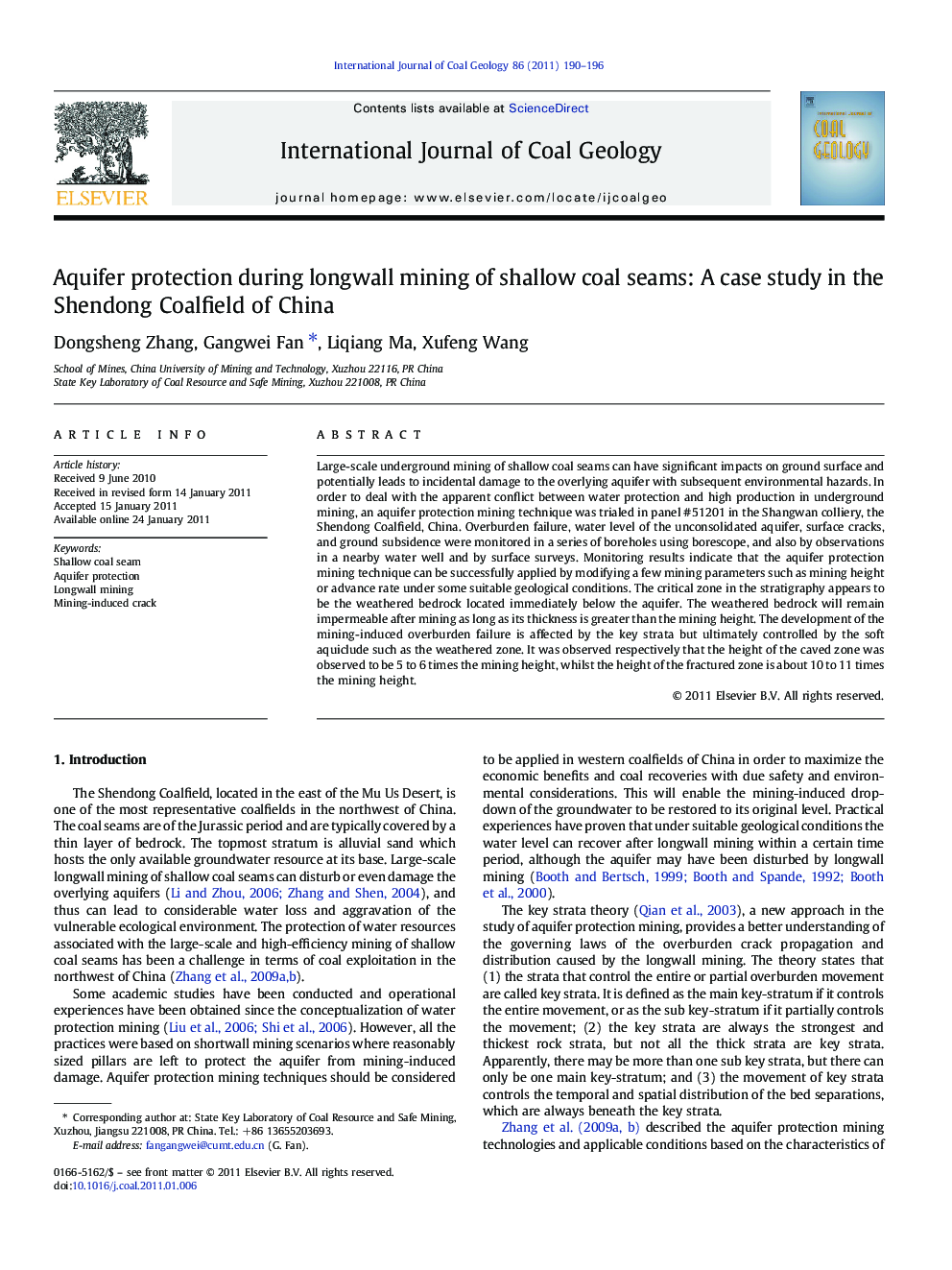| Article ID | Journal | Published Year | Pages | File Type |
|---|---|---|---|---|
| 1753841 | International Journal of Coal Geology | 2011 | 7 Pages |
Large-scale underground mining of shallow coal seams can have significant impacts on ground surface and potentially leads to incidental damage to the overlying aquifer with subsequent environmental hazards. In order to deal with the apparent conflict between water protection and high production in underground mining, an aquifer protection mining technique was trialed in panel #51201 in the Shangwan colliery, the Shendong Coalfield, China. Overburden failure, water level of the unconsolidated aquifer, surface cracks, and ground subsidence were monitored in a series of boreholes using borescope, and also by observations in a nearby water well and by surface surveys. Monitoring results indicate that the aquifer protection mining technique can be successfully applied by modifying a few mining parameters such as mining height or advance rate under some suitable geological conditions. The critical zone in the stratigraphy appears to be the weathered bedrock located immediately below the aquifer. The weathered bedrock will remain impermeable after mining as long as its thickness is greater than the mining height. The development of the mining-induced overburden failure is affected by the key strata but ultimately controlled by the soft aquiclude such as the weathered zone. It was observed respectively that the height of the caved zone was observed to be 5 to 6 times the mining height, whilst the height of the fractured zone is about 10 to 11 times the mining height.
Research Highlights► Aquifer protection mining can be successfully applied by some adjustments. ► The crack development is finally controlled by the soft aquiclude. ► The weathered bedrock zone will remain impermeable after mining. ► Key strata and weathered zone affect the aquifer protection mining in geology.
